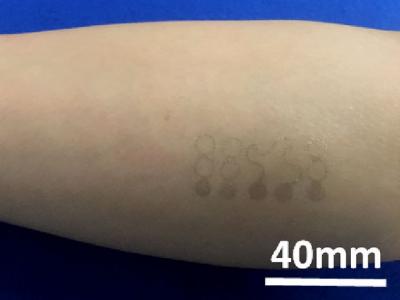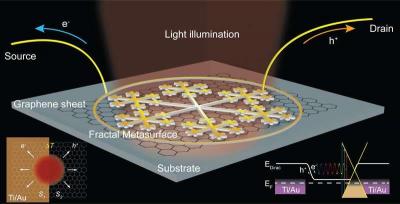Exeter team develops a simple and cheap way to make graphene devices
A team of researchers from Exeter’s Centre for Graphene Science have developed a method for creating entire device arrays directly on the copper substrates used for the commercial manufacture of graphene. Complete and fully-functional devices can then be transferred to a substrate of choice, such as silicon, plastics or even textiles.
This new approach is simpler than conventional ways of producing graphene-based devices, and could lead the way to using simple and cheap-to-produce graphene devices for various applications, from gas and bio-medical sensors to touch-screen displays.







